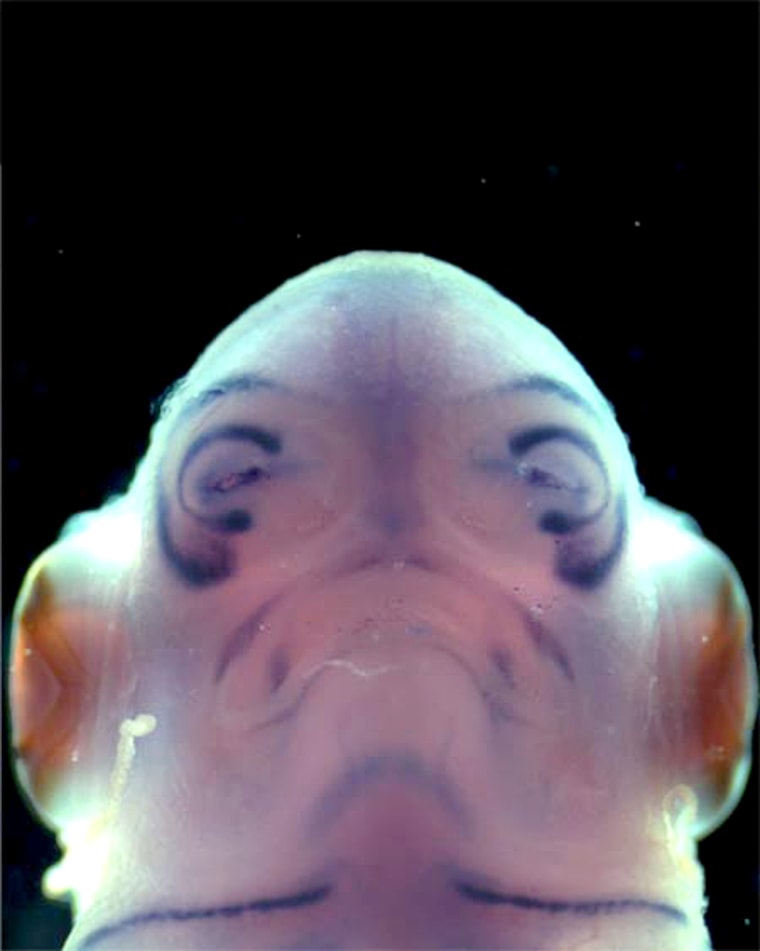The same genes that give sharks their sixth sense and allow them to detect electrical signals are also responsible for the development of head and facial features in humans, a new study suggests.
The finding supports the idea that the early sea creatures which eventually evolved into humans could also sense electricity before they emerged onto land.
The finding is detailed in the current issue of the journal Evolution & Development.
Sharks have a network of special cells that can detect electricity, called electroreceptors, in their heads. They use them for hunting and navigation.
This sense is so developed that sharks can find fish hiding under sand by honing in on the weak electrical signals emitted by their twitching muscles.
Finding genetic markers
The researchers examined embryos of the lesser spotted catshark. Using molecular tests, they found two independent genetic markers of neural crest cells in the sharks' electroreceptors. Neural crest cells are embryonic cells that pinch off early in development to form a variety of structures. In humans, these cells contribute to the formation of facial bones and teeth, among other things.
The finding suggests that neural crest cells migrate from the sharks' brains to various regions of the head, where they develop into electroreceptors.
Glenn Northcutt, a neuroscientist at the University of California at San Diego, who was not involved in the study, said the finding was interesting, but that more studies are needed before a direct link between neural crest cells and electroreceptors can be established.
"It still requires a definitive experiment, where the developing neural crest cells are marked with dye, the embryo develops and the dye clearly shows up in the electroreceptors," Northcutt said.
In the new study, the researchers found snippets of genetic material associated with neural crest cells in the electroreceptors. They did not dye the neural crest cells and trace their development.
Our electrical ancestors
Scientists think that all primitive animals with backbones, including the early ancestors of humans, could sense electricity. As they evolved, mammals, reptiles, birds and most fish lost the ability. Today, only sharks and a few other marine species, such as sturgeons and lampreys, can sense electricity.
"Our fishy ancestors had the anatomy for it," said study team member James Albert, a biologist from the University of Louisiana.
The ability to sense electrical signals is useful in aquatic environments because water is so conductive. On land, however, the sense is useless.
"Air doesn't conduct electricity as well," Albert said. "When it happens, it's called a lightning bolt and you don't need special receptors to sense it."
The development of the electroreceptors is believed to mirror the development of the lateral line, a sense organ in fish that allows them to detect motion in surrounding water. Similar processes are thought also to be involved in the development of the inner ear, the organs that help humans keep their balance.
The electroceptors are also believed to behind many sharks' ability to detect changes in Earth's magnetic field. Other studies indicate that like sailors, sharks can also navigate by celestial cues.
Scientists think that these two abilities are what allow some sharks to swim straight lines across vast distances of featureless ocean. One recent study found that a great white shark, nicknamed Nicole, swam nearly 7,000 miles (11,200 kilometers) between South Africa and Australia in just under 100 days.
